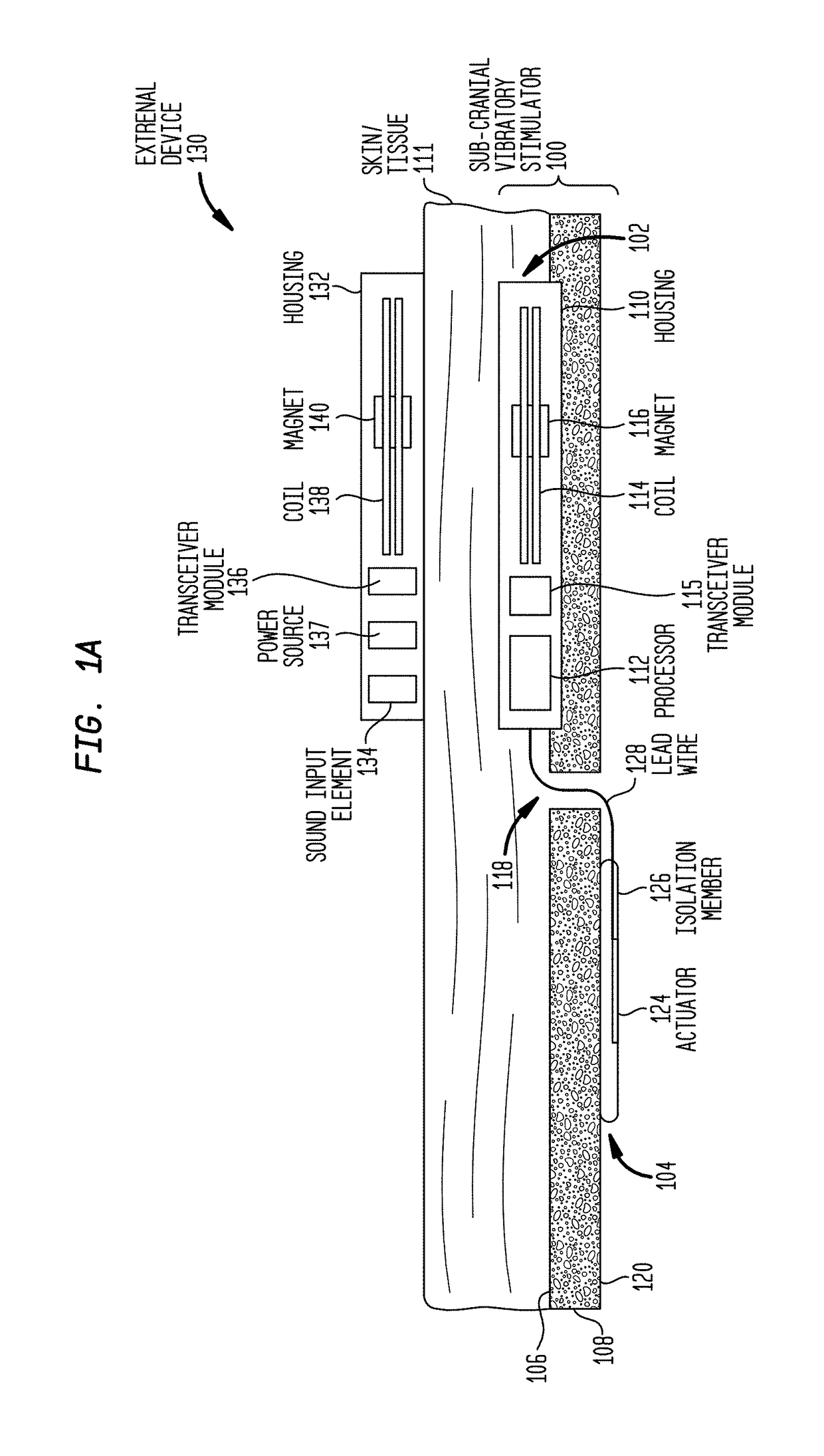Sub-cranial vibratory stimulator
a subcranial and vibratory technology, applied in the field of implantable stimulators, can solve the problems of conductive hearing loss, impeded normal mechanical pathways of the outer and/or middle ear, and inability to perceive the received sound, so as to prevent mechanical vibrations
- Summary
- Abstract
- Description
- Claims
- Application Information
AI Technical Summary
Benefits of technology
Problems solved by technology
Method used
Image
Examples
Embodiment Construction
[0028]Bone conduction devices generally operate by converting a received sound into vibrations that are delivered to a recipient's cochlea via a direct or indirect coupling to a recipient's skull bone. For example, percutaneous bone conduction devices are directly coupled to a recipient's skull via a percutaneous abutment that extends from an implantable component. The implantable component is attached to the recipient's skull bone via one or more bone screws and vibration from the bone conduction device passes from the abutment through the implantable component to the skull.
[0029]In certain transcutaneous bone conduction devices, an external bone conduction device (or a portion thereof) includes an external magnetic plate that magnetically couples to an implantable component that includes an internal magnetic plate. The implantable component is attached to the recipient's skull bone via one or more bone screws and vibration from the bone conduction device passes from the external m...
PUM
 Login to View More
Login to View More Abstract
Description
Claims
Application Information
 Login to View More
Login to View More - R&D
- Intellectual Property
- Life Sciences
- Materials
- Tech Scout
- Unparalleled Data Quality
- Higher Quality Content
- 60% Fewer Hallucinations
Browse by: Latest US Patents, China's latest patents, Technical Efficacy Thesaurus, Application Domain, Technology Topic, Popular Technical Reports.
© 2025 PatSnap. All rights reserved.Legal|Privacy policy|Modern Slavery Act Transparency Statement|Sitemap|About US| Contact US: help@patsnap.com



